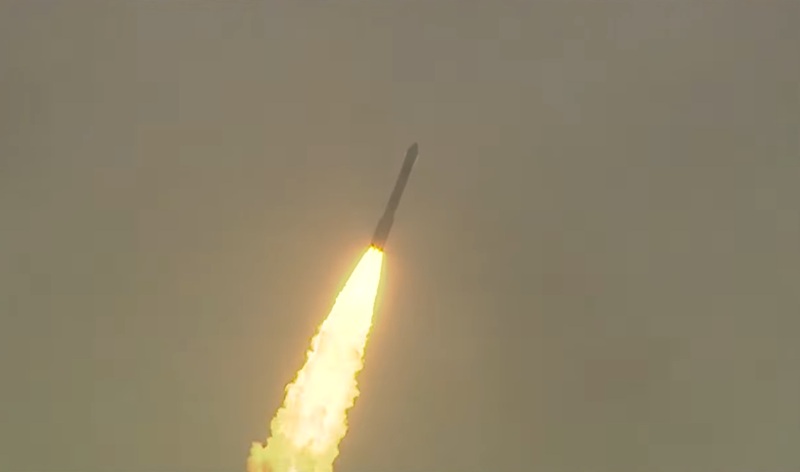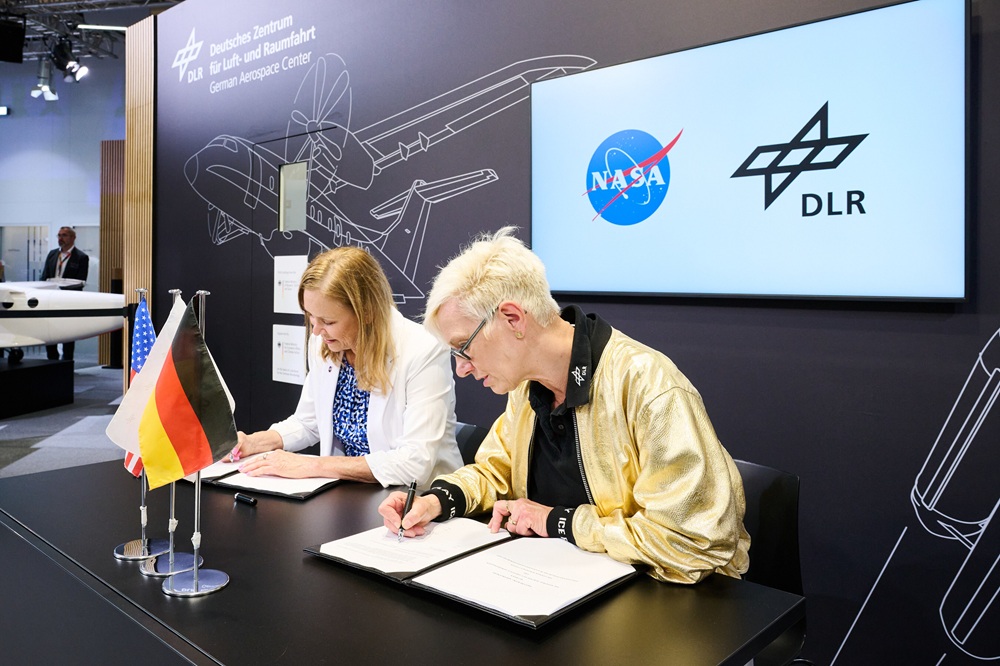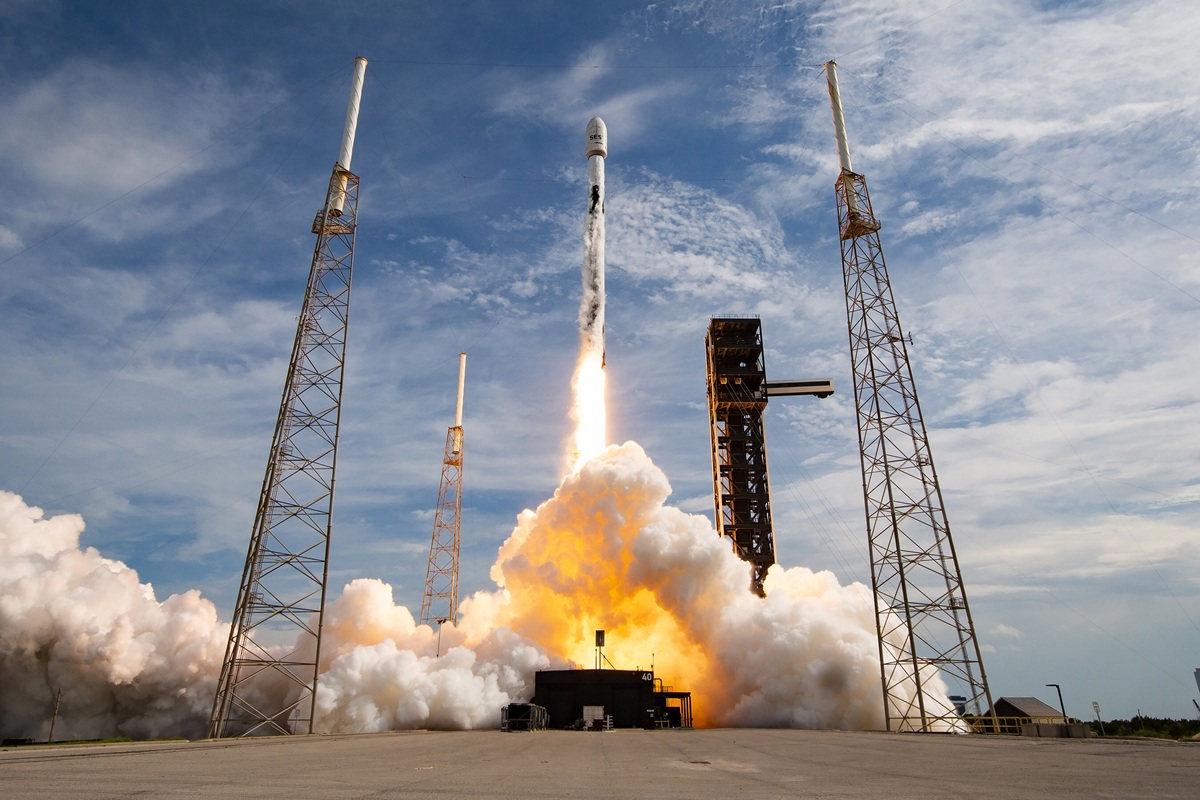The Indian Space Research Organisation (ISRO) faced a significant setback on Sunday, May 18, 2025, when its 101st mission, the launch of the Earth Observation Satellite (EOS)-09 aboard the trusted Polar Satellite Launch Vehicle (PSLV-C61), failed due to a pressure anomaly in the rocket’s third stage. The launch, which took place at 5:59 AM IST from the Satish Dhawan Space Centre in Sriharikota, initially proceeded smoothly but was abruptly aborted after a critical drop in the chamber pressure of the third stage motor, leading to the mission’s failure.
The PSLV-C61, a four-stage launch vehicle known for its reliability, lifted off on schedule with the EOS-09 satellite weighing approximately 1,696.24 kg onboard. The mission aimed to place the satellite into a Sun Synchronous Polar Orbit (SSPO), a key orbit for Earth observation satellites that allows consistent lighting conditions for imaging. The EOS-09 satellite was designed with Synthetic Aperture Radar (SAR) technology, enabling all-weather, day-and-night imaging capabilities crucial for applications in agriculture, forestry, soil moisture estimation, disaster management, and national surveillance, particularly along the sensitive India-Pakistan border.
The first two stages of the PSLV performed nominally, with minor timing deviations that did not affect overall performance. The first stage separation occurred at 110 seconds (scheduled at 111.64 seconds), the second stage ignition at 110.2 seconds (targeted at 111.84 seconds), and the second stage separation at 261.8 seconds (planned at 264.34 seconds). However, trouble emerged during the third stage, which uses a solid motor. Although the third stage motor ignited perfectly, ISRO officials observed a fall in the chamber pressure within the motor casing during its operation. This pressure drop was critical enough to prevent the vehicle from achieving the necessary velocity and trajectory, resulting in mission failure.
ISRO Chairman Dr. V. Narayanan addressed the media shortly after the launch, confirming the anomaly and the failure to accomplish the mission objectives. He stated, “The first and second stages performed as expected. However, there was an anomaly following the ignition of the third stage, which led to the mission not being accomplished.” He assured that the agency is conducting a thorough analysis of the telemetry data to understand the root cause and promised updates once the investigation is complete.
In line with standard protocol after such setbacks, ISRO is expected to form a Failure Analysis Committee (FAC), comprising senior ISRO scientists and external experts from academia. This committee will meticulously review all aspects of the launch, including flight data, launch preparations, and system performances, to identify the technical lapses and recommend corrective measures for future missions.
The failure of PSLV-C61 marks only the third failure in the history of the PSLV program since its inception in 1993. The PSLV has been ISRO’s most reliable and versatile launch vehicle, with over 60 successful missions prior to this incident. The first failure occurred during the maiden flight, PSLV-D1, in 1993 due to attitude control problems, and the second in 2017 with PSLV-C39, which failed to deploy the IRNSS-1H navigation satellite because of a heat shield malfunction.
The PSLV-C61 mission was particularly significant as it was the 63rd flight of the PSLV and the 27th using its XL configuration, designed to carry heavier payloads. The EOS-09 satellite was expected to enhance India’s Earth observation capabilities by providing more frequent and reliable remote sensing data, building on the legacy of the EOS-04 satellite launched in 2022. Its SAR payload was intended to deliver high-resolution images irrespective of weather or lighting conditions, which is vital for precision resource management and national security.
The failure of the EOS-09 mission is a disappointment for ISRO and the scientific community, especially given the PSLV’s reputation for reliability. The loss of the satellite and the delay in deploying its capabilities will have implications for ongoing surveillance and environmental monitoring efforts. However, ISRO’s leadership has emphasized that such setbacks are part of the complex nature of space exploration and reiterated the agency’s commitment to learning from this incident to strengthen future missions.
A retired ISRO official noted that the rocket likely fell into the sea after the anomaly occurred at an altitude of approximately 450 km, underscoring the mission’s abrupt end. Despite this, ISRO’s robust track record and its ability to analyze and overcome technical challenges suggest that the agency will regroup and prepare for subsequent launches with renewed focus and improved safeguards.
ISRO’s 101st mission, the PSLV-C61 launch carrying the EOS-09 Earth observation satellite, ended in failure due to a pressure drop in the third stage motor. While the first two stages performed nominally, the anomaly in the third stage prevented the satellite from reaching its intended orbit. ISRO has initiated a detailed investigation and will form a Failure Analysis Committee to probe the incident thoroughly. This mission failure, only the third in PSLV’s history, highlights the inherent challenges of space missions but also reinforces ISRO’s resolve to continue advancing India’s space capabilities with resilience and scientific rigour.





